In August 2014 I joined the Google Analytics User Conference in Brussels. In spite of the heavily rain my day looked ‘sunny’ and promising! I really enjoyed all of it! Listened, learned, take a thought..As for a report I’ve chosen not to write a review or give you a full report of the this conference, I’ve decided to give you the short description of the speaker, case or talk and all the brilliant TAKEAWAYS. So, ladies and gentlemen, here below they are.
The use of custom dimensions for web shops.
Lore Van Besien, Founder of AdSpecialist, Belgium
Lore Van Besien is an ex-Google employee and started off her own consulting business as AdSpecialist in 2010. As a freelancer, she works with international and local online marketing agencies. In addition to that, she also works with Belgian companies directly, mostly in the retail and e-commerce sector. Since 2013, she is a licensed trainer in Google AdWords and Google Analytics for the Google Partner program. Together with her clients, she will always try to make data work for business by 'translating' it to actionable items.
WEBSHOP CASE - Hippeschoentjes.be
The customer journey of a visitor on a web shop might be very different according to that visitor's past. A logged-in customer versus a logged-out visitor will probably have a different behavior. The same happens for a first-time-buyer versus a repeat buyer, or a visitor with or without a coupon code.
In this session was on how to make these different 'persona's' viewable in Google Analytics by segmenting your audience.
As a *bonus*, we were able to learn you how you can import offline data as 'weather condition' into your Analytics reporting as a segment. Are you curious about the impact of the outdoor weather on the willingness to buy of your audience?
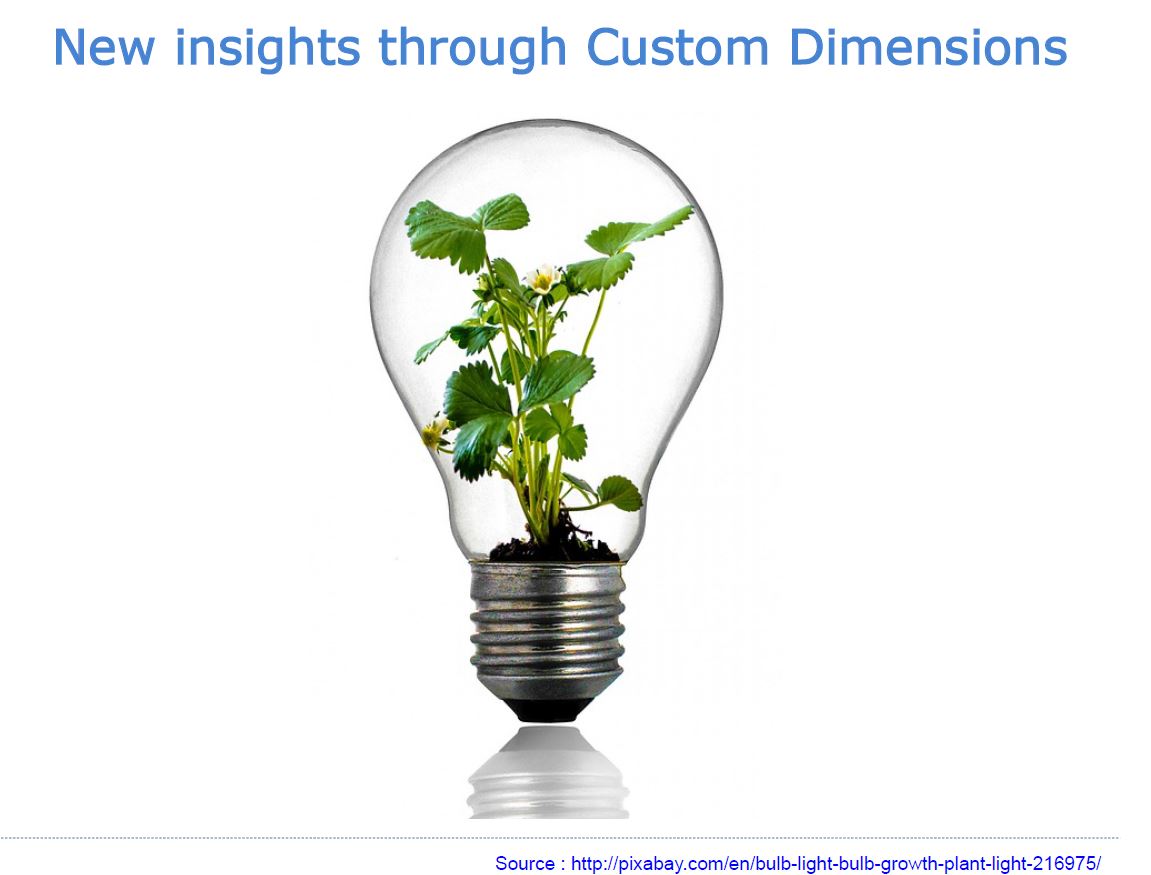
Learned about:
- What are custom dimensions and why should you use them
- How to set up custom dimensions in Google Analytics
- How to import offline data as e.g. weather conditions to Google Analytics
5 takeaways from Lora:
- Replacement of Custom Variables
- 20 custom dimensions
- Visible on Custom Segments & Custom reports
- Link back to your business needs
- Google Tag Manager is powerful!
Cross-device tracking with Google Analytics
Thomas Danniau, Digital Marketing Consultant of The Reference, Belgium
LinkedIn: Thomas Danniau
Thomas Danniau is a dedicated and skilled online marketing consultant at The Reference. His wide knowledge ranges from web analytics, content marketing and SEO to content management systems and databases. In short? He adores the web. Starting his career as a web developer for e-commerce websites, his passion for web technology soon made him embrace digital marketing. With a technical background and a strategic mindset, Thomas loves going the extra mile to boost the ROI of every online marketing challenge he tackles today.
Once upon a time, we only used one PC to visit a website. After a while we were using several computers and browsers to visit the same websites. A few years ago we also started using smartphones and tablets to explore the www … We are still guessing and trying to get a grip on the customer journey between all these devices. But hooray! The time that we can measure, estimate and understand the cross device usage has arrived! Learn how to understand and setup cross device measurement. What did we learn from it and what are the benefits to understand the cross device behavior of your customers?
5 takeaways from Thomas:
- Cross device tracking will redesign the customer journey
- Go for a high user-ID Coverage
- Add the user-ID to the email links
- Add the user-ID as custom dimension for extra insight
- You need technical knowledge to implement cross-device tracking Influencing offline sales with online interaction
Duo presemtation of David Vansteenbrugge & Dries Bulttynck, Wijs, Belgium
If it doesn’t convert online, that doesn’t mean it doesn’t convert. Through some of our cases at Wijs we clearly trace patterns by closely monitoring the analytics within a holistic framework. Among other cases we talk about a classic retailer who seeks his conversions offline as well as online, but strongly realizing that on- and offline stimulates each other in sales, and this depending on the needs of the client within a specific timeframe.
Workshop:
- Not all products sell the same way. You need to adapt & change tactics.
- How to discover channels that have impact with a holistic approach in mind
- How to define budgets according to impact, not channels pur sang
- How online visits assists and supports offline sales : changing tactics drove more sales to offline with a higher conversion rate than online.
5 take-aways from David & Dries:
- Categorise products into low and high &low involvement products
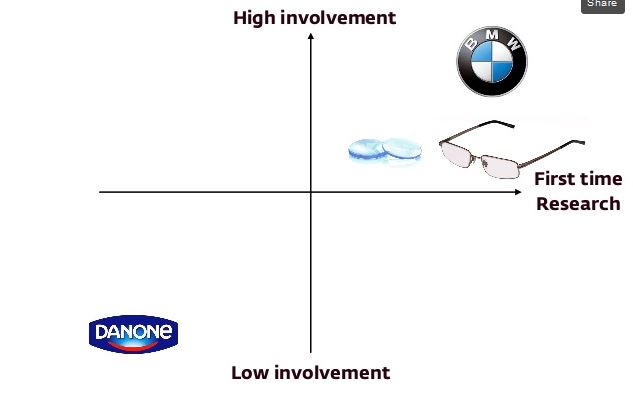
- Work together as one team and mix it up
- Work towards one target
- Analyse numbers and know your margins
- Conversions vs Profits (& Offline)
How to achieve better results & ROI with Google Analytics
Andrew Grill - IBM - Global Social Business Partner
Based in London, Andrew Grill is an internationally renowned thought leader in the fields of social business and social media networks. Currently, Andrew is a Global Partner, with IBM with a remit to help drive understanding and deliver social business solutions to key IBM clients. Previously, Andrew was CEO of leading social influence platform Kred. Part strategy, part business, part technology & 100% digital he has been sharing insights on digital and social online since 2004. Prior to Kred, Andrew was Head of International Client Strategy for Visible Technologies, and CEO of commercial property website, PropertyLook. He also held senior roles in Australia with carriers Telstra and Optus. Andrew edits the leading social business blog LondonCalling.co, and can be found on Twitter as @andrewgrill/
Watch full video here: https://vimeo.com/104477125
And I really enjoyed this video on social topic played by Anrew Grill
Thomas Cook Case: using & implementing Google Tag Manager
Stefan Callebaut, eCom Web Analyst of Thomas Cook, Belgium
What I'm really into is to create a data confidence based on total analysis of where data is derived from, what the percentage of correctness is, and whether it can be used in a safe way. Too many times I've been in situations where the wrong data was used for the right reasons. And my role has always been to create clarity.
We had a problem at Thomas Cook: before analytics change within the change process might have taken several months (using Jira planning). Not only cause for frustration, but we missed several opportunities as well.
Solution: We Integrated Google Tag Manager and unified datalayer to provide speed of change. We redefined the role scheme for the different teams and integrated 1 tag Solution on European scale. We started using a Unified Data Layer with common Dimensions on all websites.
Our result:
- Speed of change from months to weeks (or even days)
- Role as web analyst changed from reporting and set-up to more front-end tasks
- 3rd party integration is much easier now Duo Presentation with Boy Martin
Key takeaways from Stefan:
New defined roles for IT/web analytics/front-end developer will lead to:
- A ‘speed of change’
- Direct control on what is being pushed on the website
- Happy bosses
But be aware that:
- Dom scrapping is an ad hoc solution
- Analytics job will become more technical
Act on your data with Remarketing & create Advanced Audiences
Julien Cornet, Senior eBusiness Consultant at Semetis, Belgium
With a background in International Relations, Julien started his career in the world of diplomacy. Business minded and data driven, he is now Senior E-Business Consultant at Semetis since 2011. Over the last three years, Julien has assisted and managed complex Digital Marketing projects. He has also accompanied key clients in their Digital Business Intelligence strategy. Julien Was a speaker at the Search University in 2013, and attended the Google Analytics Summit in May 2014.
Google has launched remarketing in 2010 through Google AdWords. It has evolved a lot and in 2012 Remarketing was possible within Google Analytics and without inserting extra-tags. This workshop aims at explaining how to use Google Analytics for the creation of advanced audiences to be used in your marketing strategy. It focuses on implementation planning, strategic options, concrete examples, best-cases and reporting within Google Analytics.
Takeaways from Julien:
- Remarketing is always on
- Use data:
- Understand your business and product circle
- Understand user’s buying circle
- Deliever positive user experience
- Frequency capping
- Deeplinking
- Use technology
- Use advanced segmentation
- Use Smart lists
- Always be testing!
Google solutions for measurement challenges
Kerri Jacobs( Head of Platforms, Analytics, Google, USA)
Kerry gave us a vivid and powerful presentation with lots of insightful data. Here below are some slides.

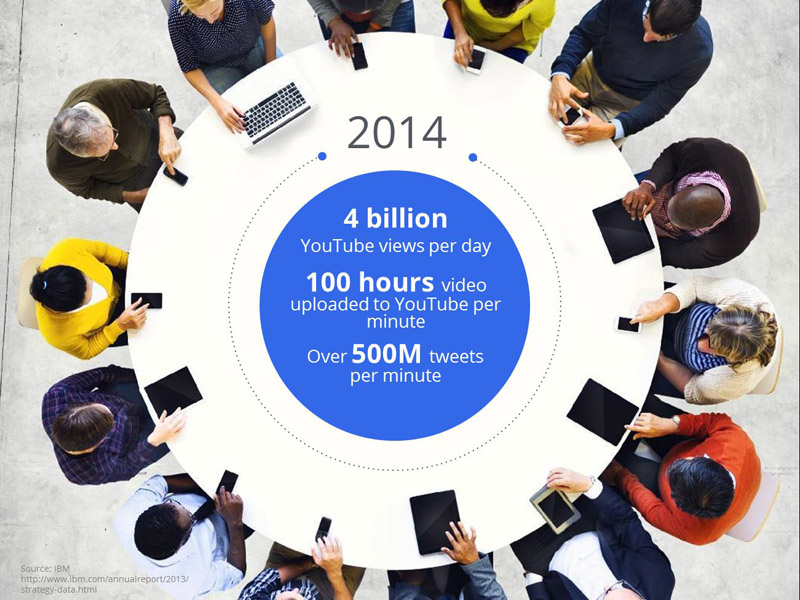
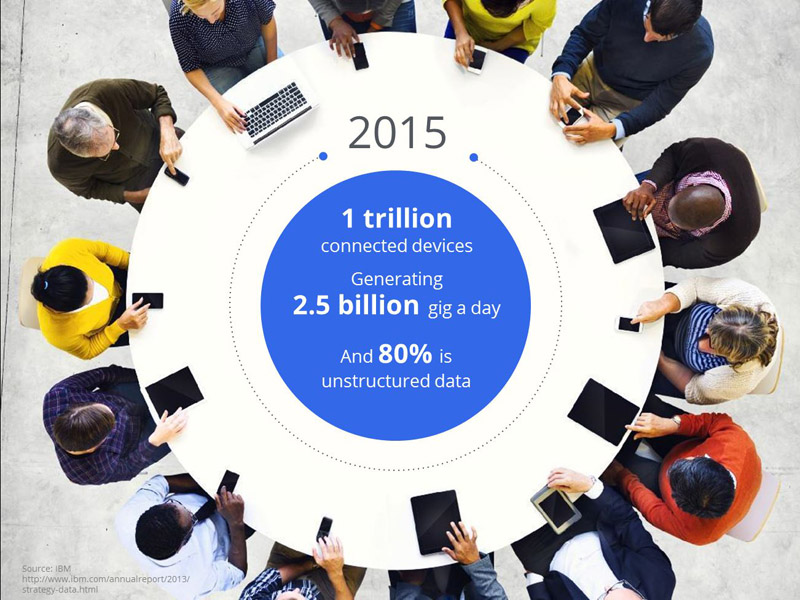
Top 5 ways to instantly ruin your analytics practice from Kerri:
- Hire a data hoarder
- Speak a different language from the CMO
- Expect attribution to lead to peace and love
- Be a partial tagger
- Work with data deniers
The Analytics Home
Daniel Waisberg, Analytics Advocate of Google UK
Daniel WaisbergDaniel Waisberg is the Analytics Advocate at Google, where he is responsible for fostering Google Analytics by educating and inspiring Online Marketing professionals. Both at Google and his previous positions, Daniel has worked with some of the biggest Internet brands to measure and optimize online behavior. He is also the Founder of online-behavior.com
“I will talk about some of the challenges of building a data centric organization. More specifically, about what types of professionals we should have and where should they sit in the organization. A question that I am trying to answer: how can I make data ubiquitous in my organization?”
Takeaways from Daniel:
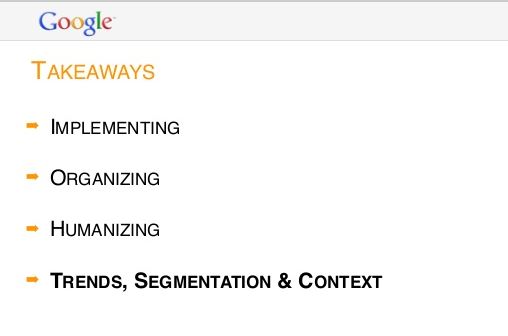
For "Customize your data visualization using Google Analytics API” by Neda Sekkat & Chloe Pierard and more visit www.gauc.be
There is also a full report available only in Dutch: http://www.dailybits.be/item/google-analytics-user-conference-verslag-gaucbe/
 StatsFish
StatsFish